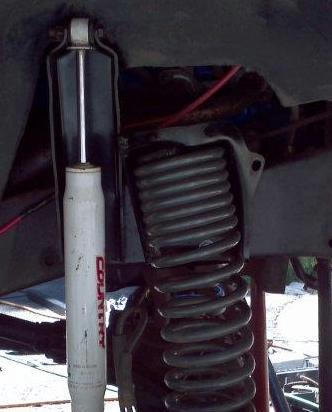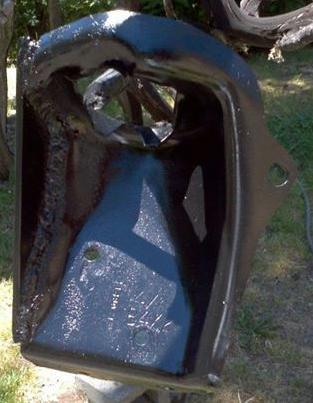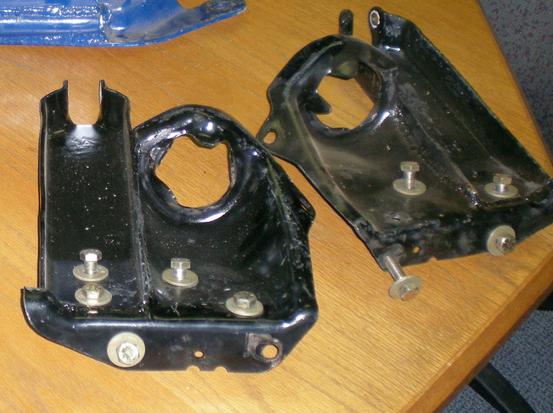By Chris Bailey
I take no credit for the idea behind this fairly easy and economical modification. I have seen that several others have done it, including one that provided helpful pictures. I did it with the limited skills that I have and with available tools. I believe this modification to be safe, but who really knows? If you perform this modification, do so at your own risk. This is only to give an idea of what is involved. I am wondering if this modification is really worth the effort. It provided me with an additional inch or so more down-travel, coils are now the limiting factor in my rig. The 9000’s ride pretty nice, however. I like “4” for both on- and off-road.
The above photo is not Bailey’s, but was used to show an F-250 mount. You can see in the example above (right) where the upper shock mount was cut off and the coil bucket was reinforced with a metal plate. You can can see in the photo (left) that the F-250 mount was mounted up next to it.
Here’s a pair of Ford Ranger coil buckets that had the stock upper shock mount cut off and added the F-250 mount
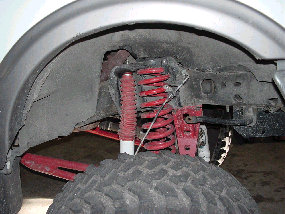
Stock Shock Tower
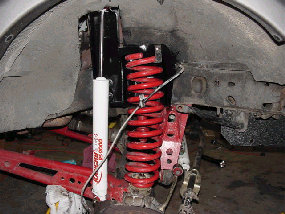
F-250 Shock Tower
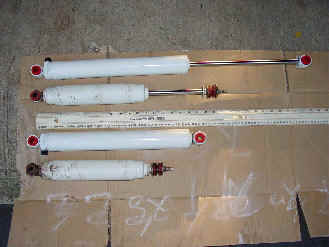
The Rancho 9012’s (above # 1 & 3) have substantially more travel than the Skyjacker base-model shocks (above # 2 & 4) that came with my 6″ lift. They also have upper eyelet-style mounts vs. the factory stem mounts, and are less likely to bind. The increased length and new upper mounting style necessitate shock tower modification.
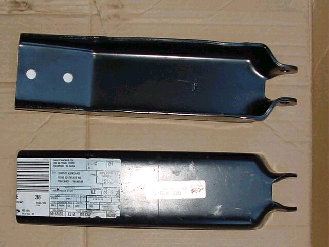
These are the shock mounts for an F-250. I can’t remember the year, but the Ford part no. is E5TZ 18183A. They ran me about $16 bucks each from the local Ford dealer, I’d bet you could get them cheaper (this dealer seems to charge more for parts). But I was at the dealership anyways, and they had them in stock.
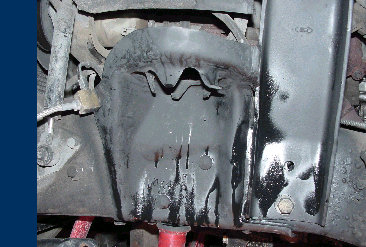
Above is the stock coil bucket with the shock mount cut off and the new F-250 shock mount in place. I used a Sawzall for the easily accessible portions and a 4″ cut off wheel on an angle grinder for the flat parts adjacent to the frame. It was tedious, more so on the drivers side due to the presence of hoses, brake lines, etc. Would have been much easier (I think) with a air cut-off tool, but I don’t have a compressor.
Overall, the modification was fairly easy and, once you look at the shock/coil on your truck, self-explanatory. But I snapped several pictures anyways, and decided to share them with y’all.
I test fit the towers, trimming the inner plastic fenderwell as needed. The passenger side air box on my ’94 lost one mounting point. No big deal, it still seems sturdy enough. And the truck is due for an entire revamp of the intake anyways. The drivers side had to have several wire bundles slightly relocated and re-secured. I used the 4″ grinder with a well-used cutting wheel for most of the fenderwell trimming and a Dremel tool with a rotary cutting bit for the tight spots.
I drilled one hole in the frame rail on each side of the truck for the lower mounting bolt. I used an existing hole in the C-channel for the top bolt on the passenger side. On the driver side, I made the command decision to use only one bolt (plus welding to coil tower) as there was so many steel lines in the channel, and one in the way of the upper hole. I could still and might add a second bolt by drilling elsewhere in the shock tower, but it seems fine.
I marked on the new shock towers where the top of the coil buckets butted up against it, then welded a small piece of box-section steel – ’cause it’s what I had – on each tower as a brace. In theory at least, this should prevent upwards deformation of the now weakened coil tower and help alleviate strain on the short shock tower-to-coil bucket weld (next).
I then remounted the shock towers with the brace butted up tightly against the top of the hacked coil towers. I then made a short weld connecting the top of the coil tower to the shock towers. I painted the new assembly and reinstalled the coils and shocks. The only hitch at this point was bolting up the top shock mount. The metal sleeves that fit inside the urethane bushings allowed for a minimum of 1/2″ bolt size, but the Ford towers were drilled a little smaller. Wish I’d noticed this sooner because they were impossible to drill out as mounted inside the engine bay. Fortunately the Dremel tool with the flexible shaft attachment came to my rescue. A few minutes with the little grinding wheel and the bolts fit perfectly.

